Imagine being in a room with dinosaurs one moment and superheroes the next. Or maybe you want to take a stroll through ancient Rome or a galaxy far, far away. With virtual production, you can do all of that — often on the same day.
What once sounded like science fiction is now a reality with virtual production, which uses high-resolution LED walls to project a scene or background, rather than being added in post-production like green-screen technology. The technology behind these screens is real-time game engines, just like those used in video games.
The technology is used in the entertainment industry but is also being used by higher education institutions like Texas A&M University, which is known for embracing innovative technologies and finding new ways to use them to support the people of Texas and beyond.
“We are a land-grant state institution. We have a duty to understand how technologies or emerging factors will impact the workforce and impact the economy of the state,” said Tim McLaughlin ‘90, ‘94, dean of the College of Performance, Visualization and Fine Arts at Texas A&M. “Virtual production is a combination of technologies and work processes that will impact different verticals of the state economy, beyond media and entertainment.”
Building off the success of its world-renowned visualization program, Texas A&M is now leading the way in this technology with the creation of the Virtual Production Institute (VPI), which will be a breakthrough in extended reality (XR) technology. The new institute is part of the Texas A&M College of Performance, Visualization and Fine Arts.
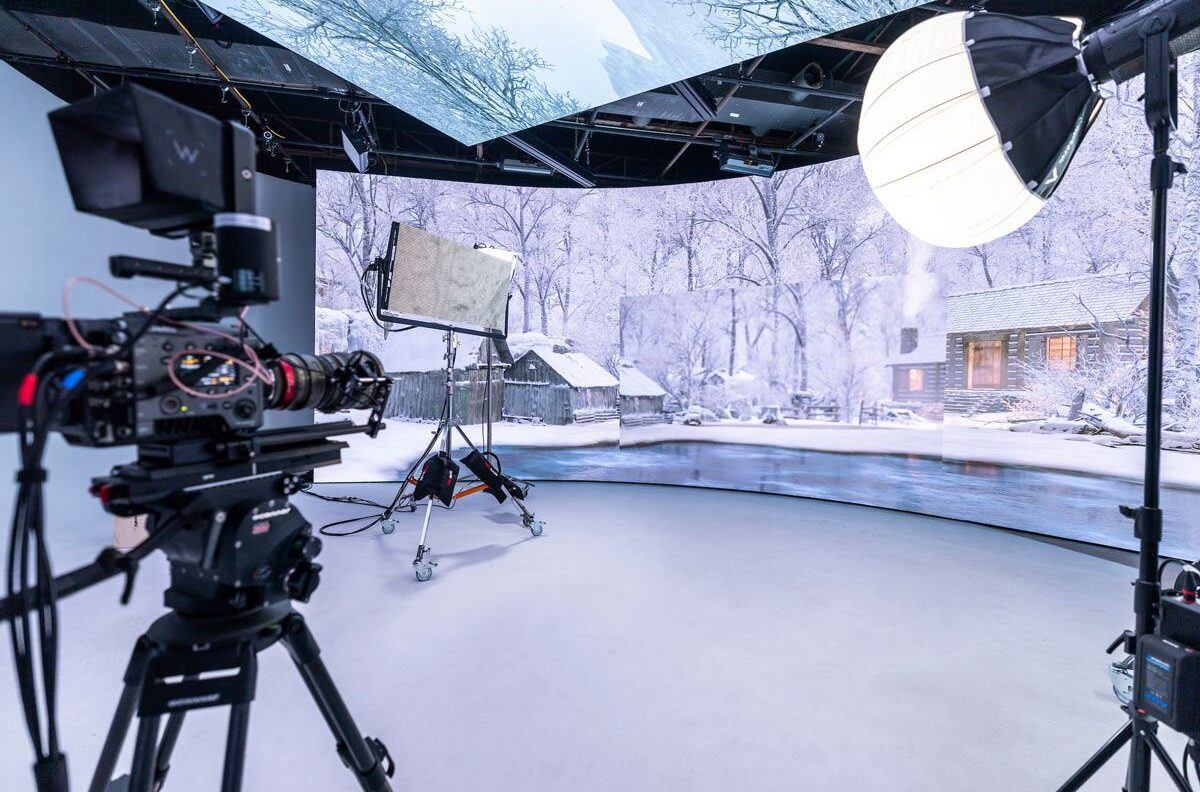
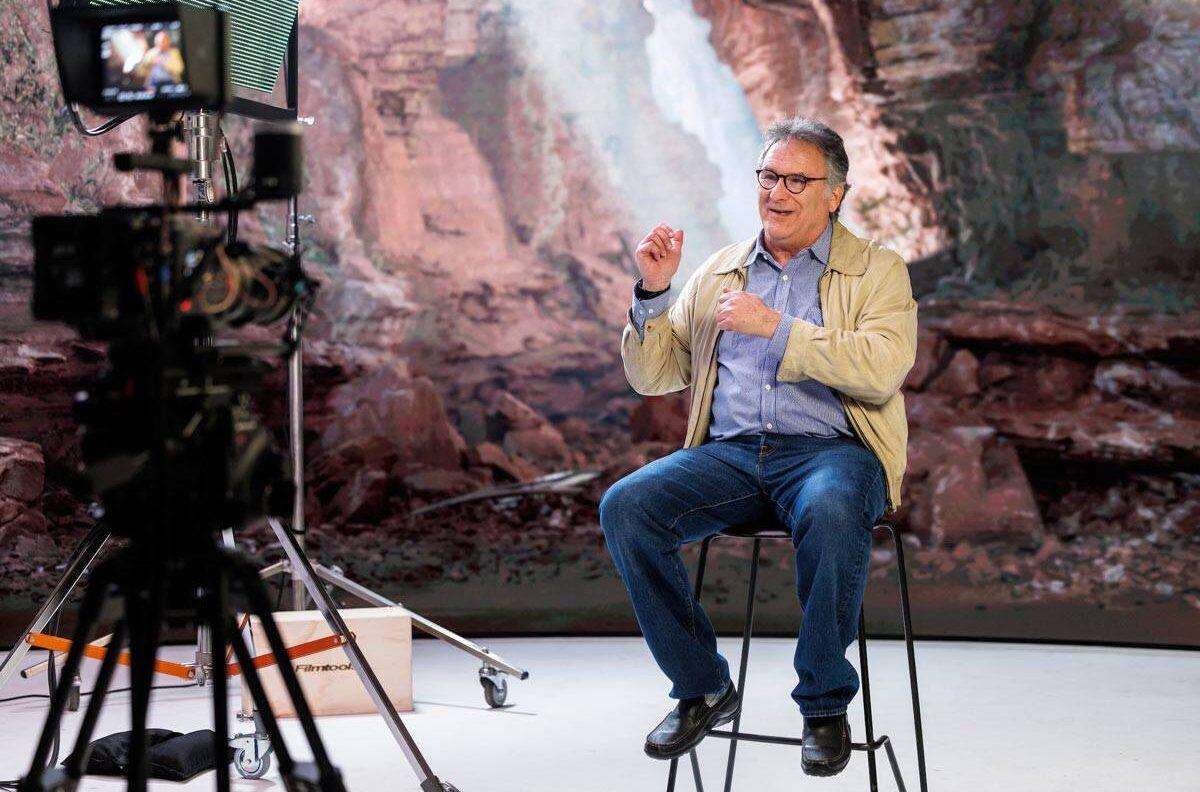
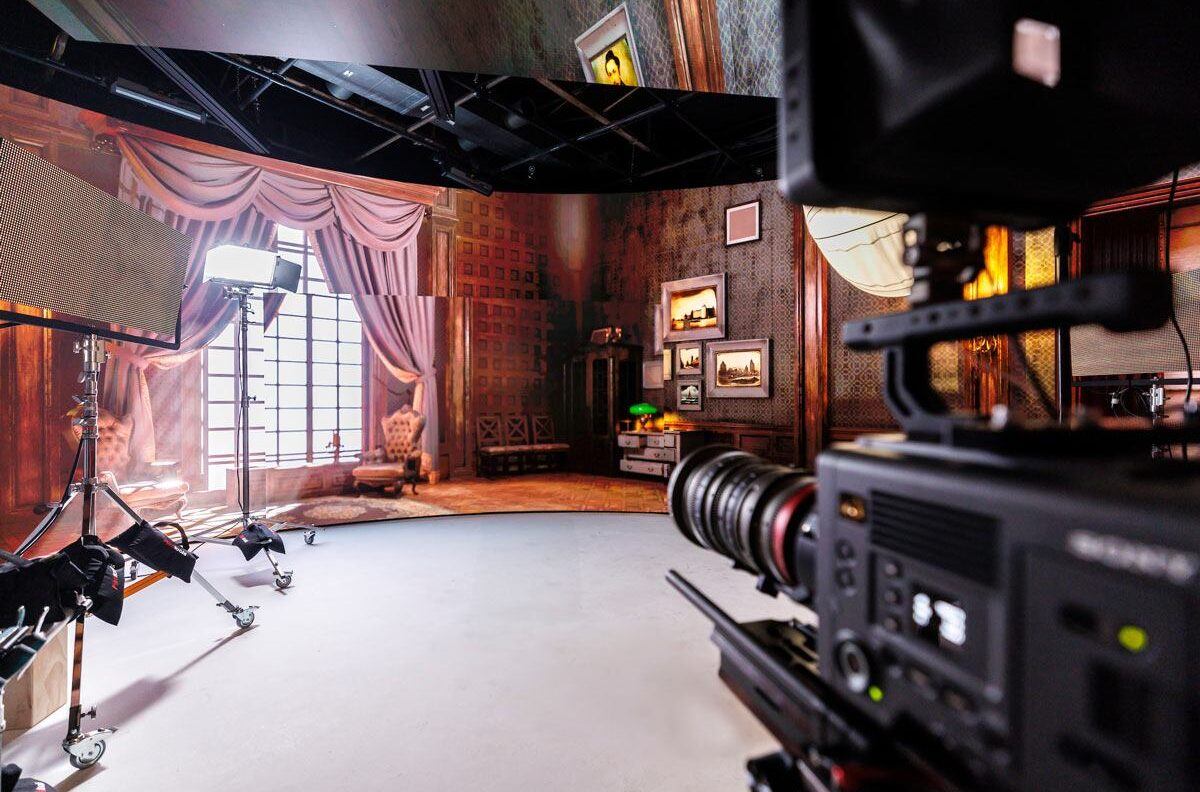
Photos by Abbey Santoro/Texas A&M University Division of Marketing & Communications
Though VPI was initially created with film and entertainment in mind, its potential extends far beyond — into education, workforce development, training simulations and industry innovation. Texas A&M is building the future of immersive technology that will reshape storytelling, training and problem-solving across industries.
“If you take that technology and you move it into another space, let’s say for simulation and training, that means we can create a much more immersive training environment for first responders or physicians who are learning a new procedure,” McLaughlin said.
“You can also take that technology and move it into a manufacturing space. We want to understand what it will be like to build a factory that combines the physical and human factors of manufacturing, along with the mechanical. We have a space where we can play with the virtual forms of the facility, along with the live human factors in a single space within the College of Performance, Visualization and Fine Arts,” he said.
Our goal is that within five years, the state of Texas is recognized as the leader in the use of this technology across different disciplines.
Moving Beyond Green Screens
Green-screen technology has been used for decades on movie sets and, for a long time, was thought to be the pinnacle of creative innovation. But it has drawbacks — such as matching on-set lighting in post-production and hoping actors were looking at the right place on blank screens. Virtual production fixes those issues by creating an immersive environment where actors can see and react to what is happening around them.
“The idea here is that you’re creating a world. This is a computer graphics environment, and it only exists in computer graphics, and we are projecting that environment onto LED panels,” said David Parrish, director of the College of Performance, Visualization and Fine Arts at Texas A&M-Fort Worth and a veteran in visual effects with Industrial Light & Magic, Sony Pictures Imageworks and Reel FX. ”This is actually something that is like a television set, but a very large television set with many, many Sony LED panels that we are utilizing here.”
Recent movies like The Batman used this technology, as did TV shows like The Mandalorian and Westworld. Virtual production technology makes for a more immersive experience — for the production team and viewers.
“It offers you the ability to create any world that you can imagine. It can be a real world. It can be another planet. You can be on a mountaintop. You can be in the desert. And you can switch those out relatively quickly. That ability is something that’s incredibly valuable, especially if you’re trying to shoot a film, shoot a project where you have multiple scenes, multiple environments,” Parrish said.
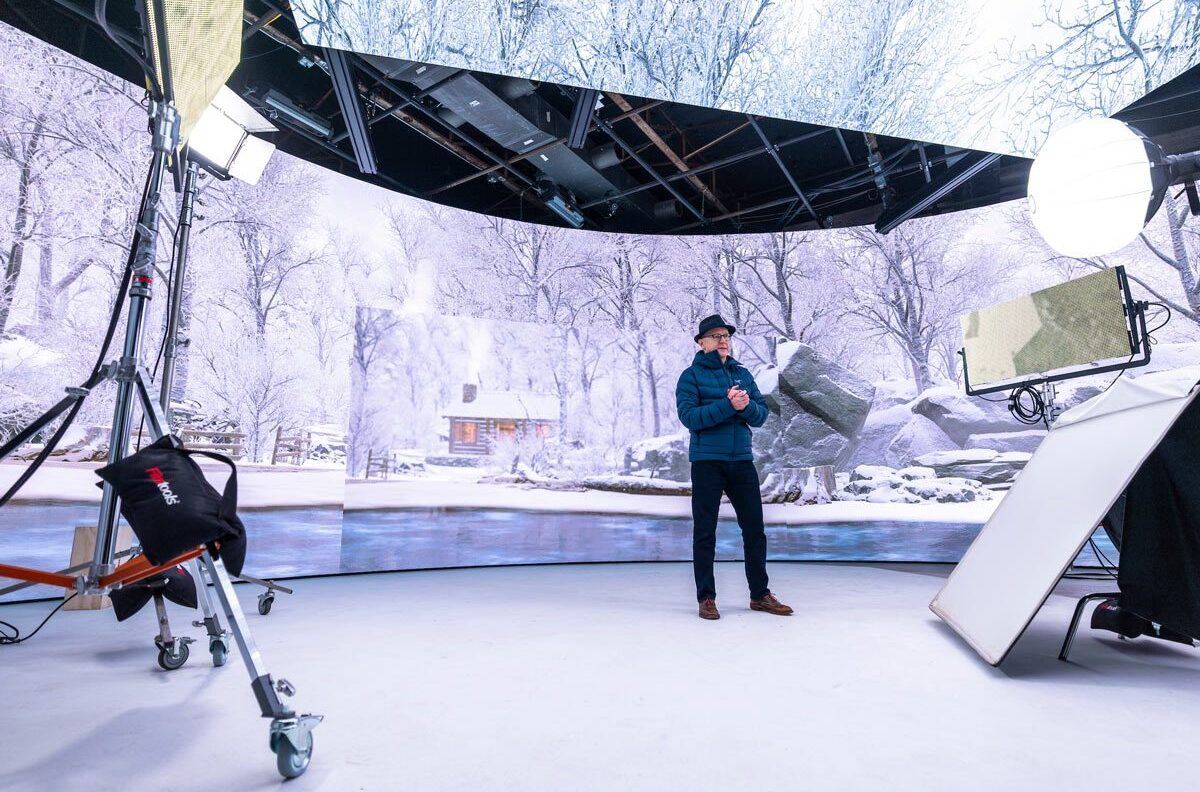

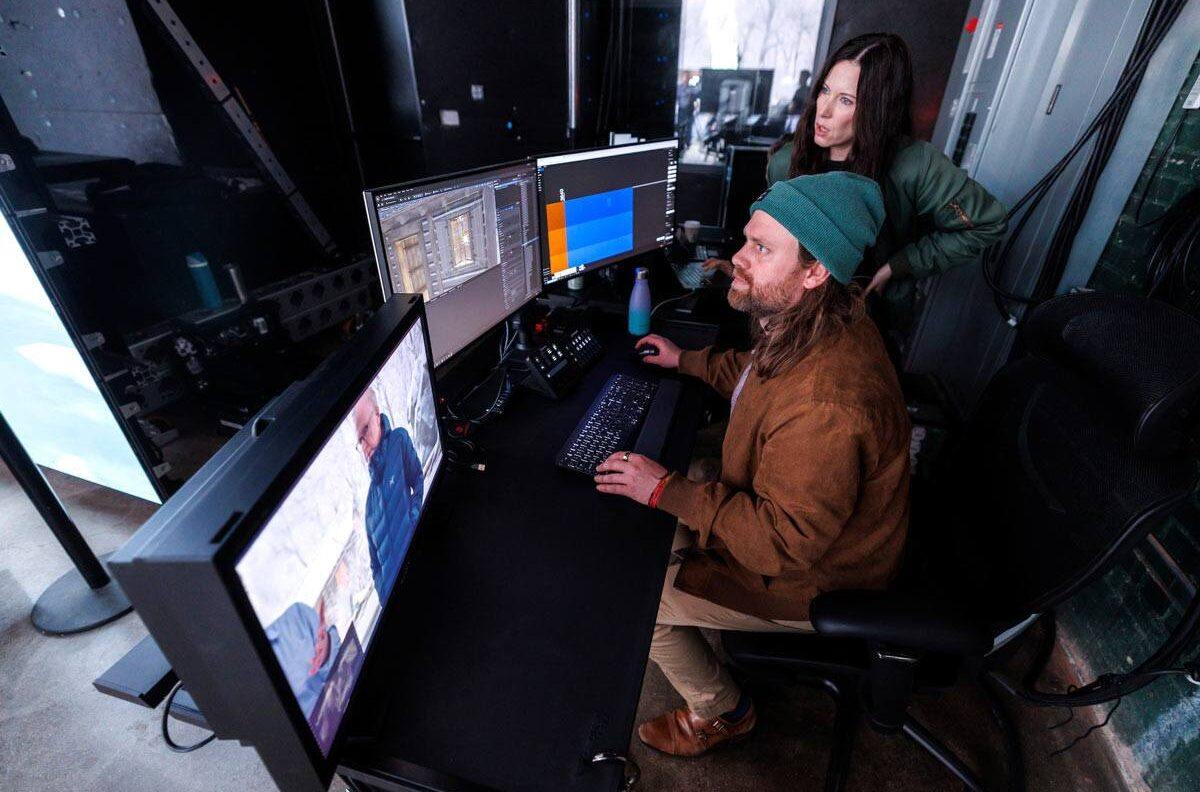
Photos by Abbey Santoro/Texas A&M University Division of Marketing & Communications
Not only can this help in the creative process, but it also can save time and money.
“You don’t have to go and take an entire crew out to the desert or up to a mountaintop. Now, you put them all on stage. As long as you’ve built your environments in this Unreal Engine, then you can move around that environment at will,” Parrish said.
Virtual production stages create more advanced visuals than green-screen technology allows by incorporating an LED wall showing computer-generated imagery to create immersive environments. Augmented reality — in which additional effects and structures are used in tandem with performers in front of the LED wall — creates enhanced visual effects.

The investment in VPI at Texas A&M represents a significant commitment to the cutting-edge technology that provides us with access to a storytelling tool, but also a practical tool that can be used in a number of different industries, a number of different ways.
This technology not only displays amazing graphics in a real-world environment, it also can save hours of post-production work since the graphics are being created at the time of production, not after. “In the past, we’ve used renders to create movies. Those renders can be time-intensive,” Parrish explained. Video rendering is the process of taking raw video and converting it into a product that viewers can play back. The process, though necessary, is incredibly time-consuming. “Movies that you see in the theater take days, even months to create all of those images. With this technology, with Unreal, we’re able to create those images in real time.
“The investment in VPI at Texas A&M represents a significant commitment to the cutting-edge technology that provides us with access to a storytelling tool, but also a practical tool that can be used in a number of different industries, a number of different ways. It is something that our college is using to combine the multiple aspects of our program and performance, visualization and fine arts,” Parrish said.
Leading The Way In Immersive Technology
In 2024, The Texas A&M University System Board of Regents approved the establishment of the VPI, the nation’s first institute of its kind that comprehensively integrates real-world scenarios and the latest in XR technology to advance problem-solving and support workforce development across industries.
The institute is based on the Bryan-College Station campus with an extension at the new Texas A&M-Fort Worth campus, an anchor for the innovation and technology district in downtown Fort Worth. Institute faculty, staff and equipment to support performance capture, large-scale mixed-reality environments, technology-infused classrooms and high-performance computing and instrumentation were funded by the 88th Texas Legislature with strong support from the state’s growing media and entertainment industry.
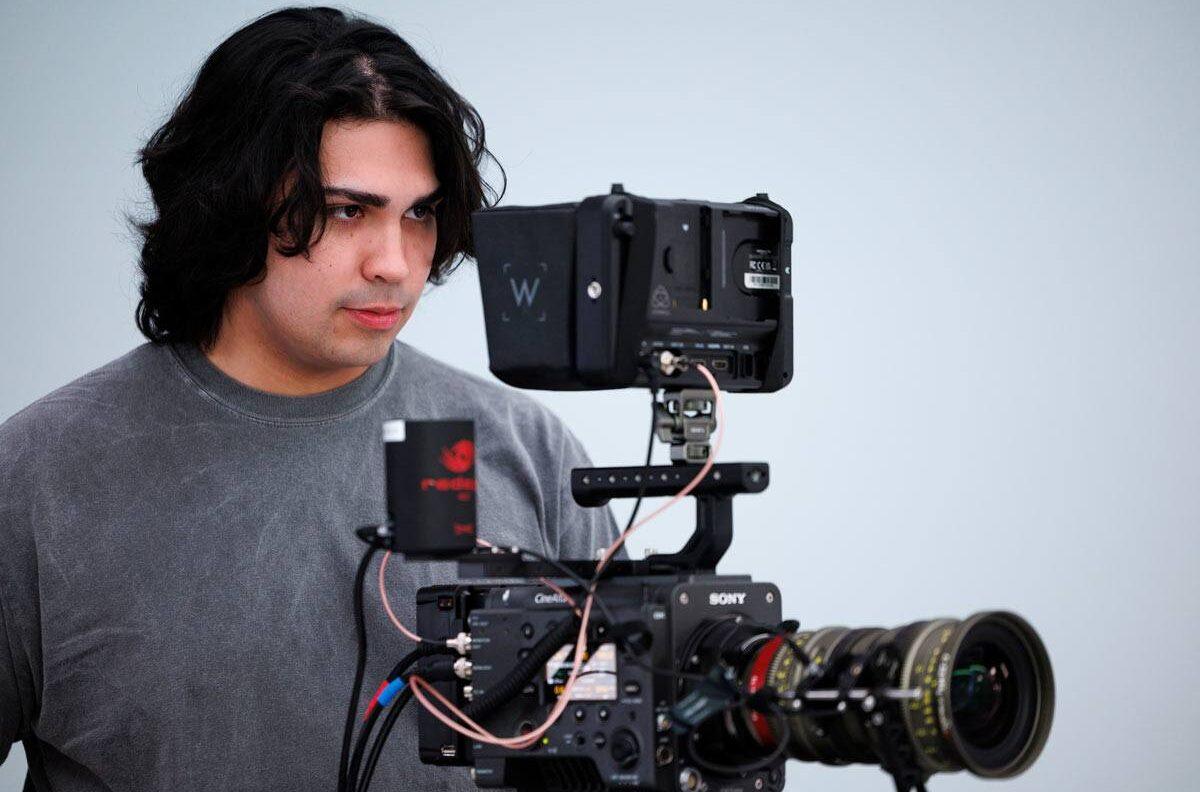
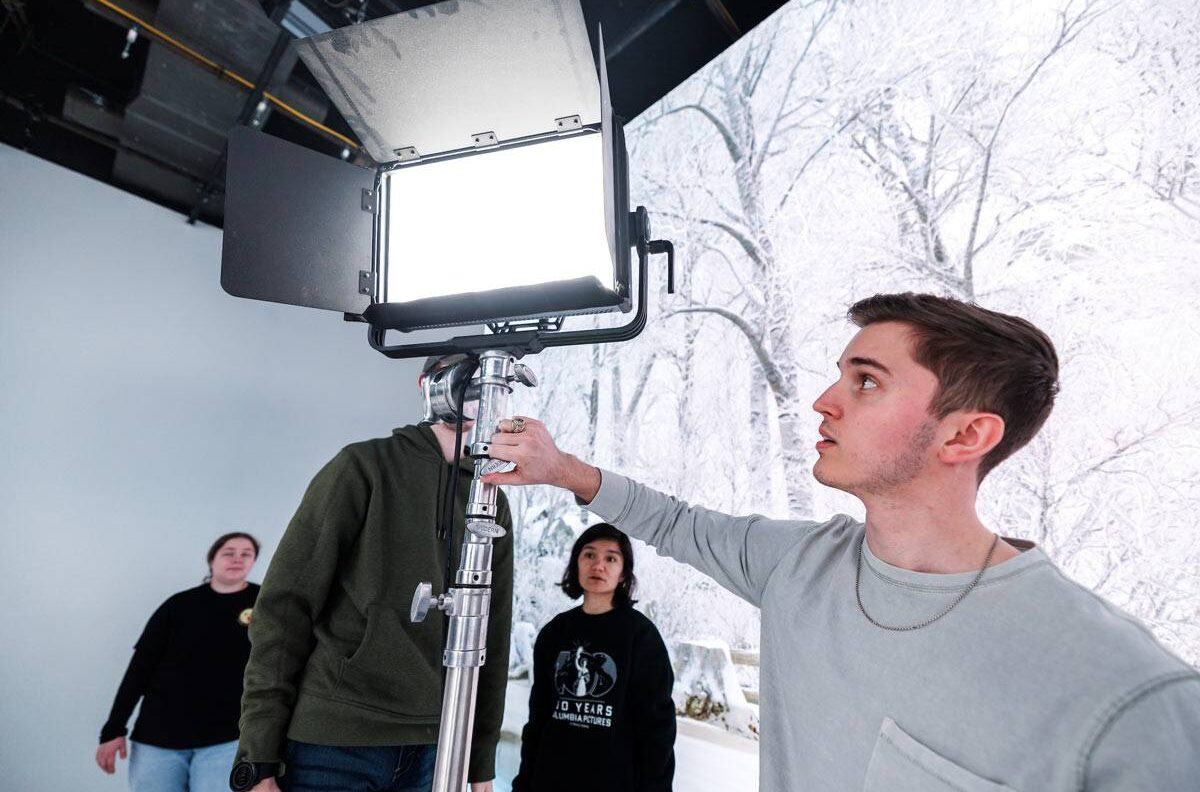
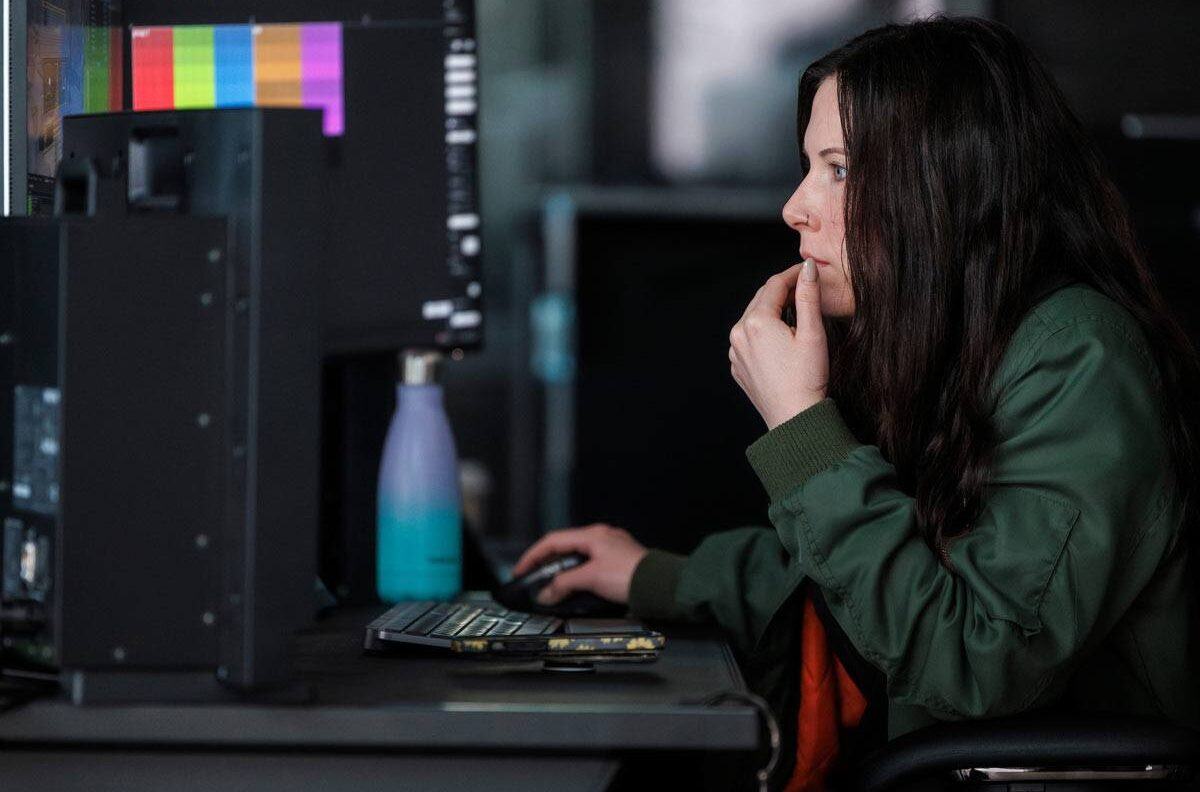

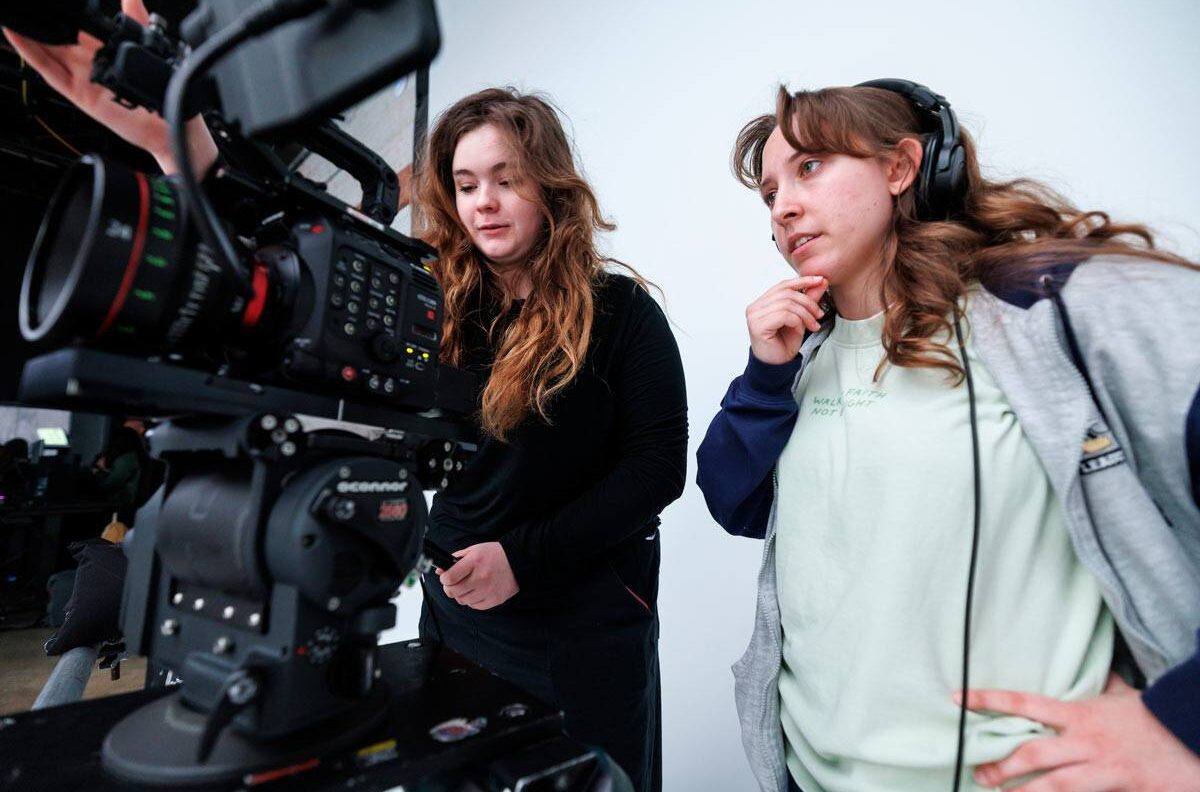
Photos by Abbey Santoro/Texas A&M University Division of Marketing & Communications
Multiple virtual production stages are in use, including a temporary stage constructed at Starlab on the Texas A&M-RELLIS campus (which will eventually be moved to the main campus in Bryan-College Station), and two at Texas A&M-Fort Worth. The institute is partnering with Synapse Virtual Production to integrate the LED volume stages and support curriculum development and with Sony Electronics to provide state-of-the-art LED technology and digital workflows.
The XR market is projected to be a $12.9 billion industry in the United States in 2025. Texas A&M students will learn the art and science of the development and applied use of XR — which incorporates augmented and virtual reality, display technology, sensing technology, artificial intelligence, real-time 3D graphics and simulation — using the latest technology that will prepare them for an expanding Texas job market. The institute will also support enhanced curriculum across the university as other schools and departments tap into virtual production capabilities that align with changing workforce needs.
“The Virtual Production Institute creates an interdisciplinary ecosystem that will meet industry needs in media and entertainment, health care, the military, first responders, manufacturing, aerospace and live entertainment, among other uses,” McLaughlin said. “There’s currently a workforce gap impeding a more rapid and broader adoption of virtual production. Our plan includes addressing that gap and exploring new ways to use the technology.
“Our goal is that within five years, the state of Texas is recognized as the leader in the use of this technology across different disciplines. We want people from around the country coming to Texas A&M to say, ’Look at what you’re doing. I want to do more of what you’re doing. I want to work with you.’”
